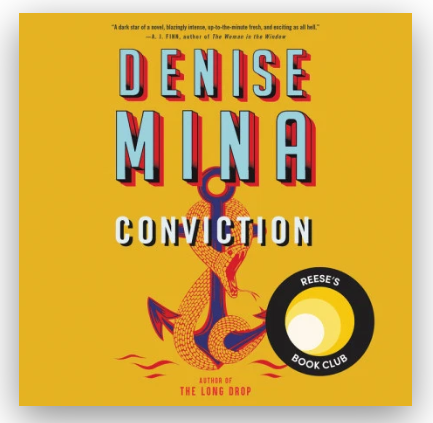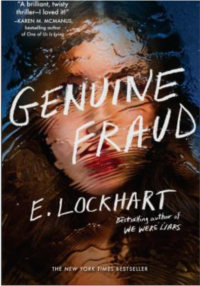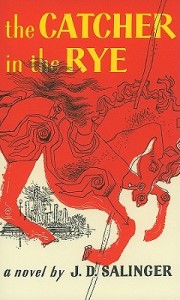I hope this post will be helpful whether you’re a proofreader wanting to compare my proofreading process with yours, an author wondering about the stage, or a project editor considering how to train new proofreaders. If you have questions or your process is different, I’d love to hear about it.
These are the procedures I go through when proofreading nonfiction page proofs (also called first pages or galleys) for a publisher. Proofreading fiction has fewer steps (no references, figures, and such), and proofing an ebook onscreen will be different, too. This kind of proofreading, also known as a cold read, is different from checking against a marked-up manuscript. If you’d like thorough, step-by-step instructions for proofreading with no personal anecdotes, I’ve also written up the best practices I’ve found.
Before I begin to read
When I get a book to proofread, it’s an unbound hard copy (also called first pages, page proofs, or an unbound galley). The publisher usually provides a checklist. There is a style sheet from the copy editor (the best style sheets list all place names and people names as well as terms of art) and a standard form that tells the proofreader what style to use for dates, plural possessives, etc. If your publisher does not provide this, it’s a good idea to make one yourself, choosing the first instance as the example—date style might be 23 April 2016 or April 23, 2016. There also may be a list of text for running heads on each chapter’s recto (right-side pages) and verso (left-side pages). The publisher also provides flags, which have gum on one edge that you need to moisten to attach to a page when you have a question for the project editor. Post-it notes do NOT work as flags, because they come off too easily. You stick the flag to the back side of the page you’re querying and fold it over to the front.
First, I gather my proofreading tools and read through all the style sheets and instructions. This step sounds terribly boring, but it engraves unusual spellings or style choices in my mind so that I don’t waste time correcting it. Then I count the pages (roman and arabic) and add up the numbers. This is on the publisher’s checklist. As I’m counting, I put a Post-it note at the start of each chapter. I reuse those notes many times; they are simply labeled 1, 2, 3, Ack, TOC, Intro, etc. This set of Post-it notes is just a tool; I remove them before returning the pages to the publisher.
The Post-it notes are helpful when I check or add the page numbers and compare chapter titles in the table of contents with those at the head of chapters. I set aside the front matter and carefully check that the chapter titles and page numbers in the table of contents match what’s on the actual page. At this time, I also hold the opening page of each chapter up to the light along with the one that came before, to ensure that the sinks (top margins) and other formatting of the chapter titles are consistent. I check for things like font size, caps, line spacing, etc. I note any discrepancies by putting a check mark next to the lines involved in both places and attaching a flag. On the flag, I write a brief query (e.g., “Chapter title does not match TOC”) and the page number (in case the flag is somehow separated from the page it refers to). The lead pencil, not the red pencil, is used for marking up the pages and writing on the flags. At this time, I also check that the running heads match the list provided and flag the ones that don’t.
I also look at the front matter carefully to see if there are any blanks; usually the Library of Congress Cataloging-in-Publication information is not yet complete at this stage, so I add a flag that says “CIP TK” with the page number.
Start at the end
After the table of contents, running heads, and chapter openers are checked, I head to the back matter. I use a piece of colored paper to isolate each line as I read. I still don’t need the red pencil; I mark any errors found back here in lead pencil. Glossary, notes, bibliography, and such are not the most exciting reading material, so it’s good to read them through while I’m fresh. They further engrave unusual names and terms of art into my mind so that they make more sense when you read the main body. Usually the running heads on the notes pages are “Notes to Pages 000-000.” These get filled out last, after the main body has been proofread, another reason I leave the Post-it notes with the chapter numbers in place until the end. In the bibliography and notes, I check for loose lines and incorrect line breaks, especially in URLs. When I wonder how to break a URL or how to style an unusual reference, Chicago has answers. The best style sheets provide examples of unusual references, too.
If anything seems odd, I have learned that it’s best to ask my project editor about it. I’ve had to redo the notes section for a book I worked on because I thought note numbers had been left off; instead, I was supposed to fill in the page number each note refers to. No fun. I could have saved myself a lot of hassle with a quick e-mail query.
Proofreading for sense
Corrections to the text are signaled by a slash mark (in lead pencil) in the text, with the correction out in the right margin. To be sure the corrections line up, I read one line at a time, moving a colored piece of paper down the page. Publishers do not want the corrections written between the lines, because they are too hard to see and decipher that way.
Finally, I start proofreading the main text. I use binder clips to separate what has been proofed from what has yet to be done.
The red pencil
The red pencil is used for very specific things: to circle or put a carat under note numbers and write the number (also circled) in red in the LEFT margin. I circle references to figures and tables in red, too, and write and circle them in red in the left margin.
The lead pencil
I correct errors by marking them in lead mechanical pencil (some publishers might prefer blue) with corrections in the right margin, lined up with the error.
Circling something in the margin signals to the compositor that it is not to be included in the text. Writing “sp” in the margin without circling it, for example, means add “sp” where indicated instead of spell out where indicated.
If the publisher provides a searchable pdf of the pages, I double-check to be sure that I caught all instances of a frequent error.
After proofreading the text
When I have finished proofreading the text, I go through and make sure that the figure numbers, table numbers, and note numbers are in order. Note numbers usually restart at 1 with each new chapter. Figure numbers might be continuous or they might be numbered like 1.1, 1.2, 3.1, 4.1, 4.2, etc. If there’s a list of figures, I make sure the page numbers are correct or fill them in if they are 000.
I fill in the page numbers in the notes running headers. This is another place where the big, clean table surface is helpful. I can have four stacks of pages: one for the text I have yet to go through for note numbers, one for the notes section I have yet to fill out, one for the (turned over) text I have gone through, and one for the notes pages (turned over) I have already completed.
Finally, I remove all the Post-it notes and binder clips, put everything back in order, and return the pages to the press.






